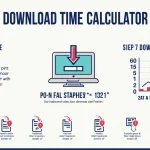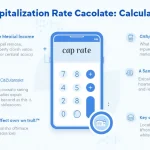Is this tool helpful?
How to Use the Content Summarization Tool Effectively
Unlock the full potential of the Content Summarization Tool by following these straightforward steps. This tool is specifically designed for training managers who want to quickly condense lengthy articles and video transcripts into clear, concise summaries.
1. Enter Your Content
Start by inputting the main content you want to summarize. The tool supports two types of content inputs for comprehensive coverage:
- Article Text: Paste the full text of your document, such as a 5,000-word employee handbook or a 3,200-word product training guide.
- Video Transcript (Optional): Add a transcript from training videos, like a 10-minute leadership workshop transcript or a 12-minute safety procedure video script, enabling the tool to summarize diverse content types together.
2. Select Summary Preferences
Choose how detailed you want the summary to be. The tool offers flexibility to fit different training needs:
- Short Summary: Approximately 10% of the original text length; ideal for quick overviews.
- Medium Summary: Around 20% of the original content; balances brevity and detail.
- Long Summary: Up to 30% of the original text; suitable for in-depth understanding.
3. Include Key Points for Clarity
Opt to include key points by selecting the checkbox. This feature extracts essential bullet points alongside the summary, helping you highlight critical information quickly and effectively.
4. Generate and Review Your Summary
Press the “Generate Summary” button to initiate the summarization process. Once complete, you’ll see a clear and concise summary displayed, along with key points if selected. You can easily copy or download the summary to use in your training materials.
5. Reset and Start Fresh
If you’d like to summarize new content, simply clear the input fields using the reset option. This ensures a smooth user experience where you can quickly prepare different summaries without hassle.
Introduction to the Content Summarization Tool for Training Managers
In the modern training landscape, training managers often face the daunting task of digesting large volumes of text and video content. The Content Summarization Tool is a smart, web-based solution designed to transform these lengthy materials into clear, manageable summaries and key point lists. It empowers training professionals to save valuable time, increase content accessibility, and maintain consistent quality across all their training resources.
This intuitive tool harnesses advanced algorithms to analyze both written articles and video transcripts, delivering summaries that retain core messages while trimming unnecessary details. Whether preparing workshops, employee onboarding sessions, or quick reference guides, training managers can rely on this tool to simplify content review and improve training effectiveness.
By streamlining content digestion, the Content Summarization Tool enhances productivity and ensures training sessions focus on the most impactful and relevant information available.
Practical Applications and Use Cases for Training Managers
1. Creating Focused Training Modules
Transform lengthy manuals or policy documents into concise modules that trainees can easily absorb. For example, condensing a 6,000-word compliance guide into training slides with clear, focused summaries.
2. Building Quick Reference Guides
Summarize complex procedures or protocols into handy quick reference sheets. This approach helps employees recall essential steps without sifting through extensive documentation.
3. Enhancing Video-Based Training Materials
Convert instructional video transcripts into written summaries to complement audiovisual learning. This is especially effective for mixed-training environments, catering to learners who prefer text-based resources alongside videos.
- Scenario: Preparing workplace safety training from a 25-minute video.
- Action: Paste the transcript and select a medium-length summary.
- Outcome: Receive a detailed, 300-word summary covering critical safety protocols, plus bullet-pointed key takeaways.
4. Streamlining Employee Onboarding
Simplify the onboarding process by summarizing essential materials to help new hires understand company policies and procedures quickly and efficiently.
5. Preparing for Content Review and Strategy Meetings
Use the tool to generate summaries of large reports or industry studies, enabling focused and effective discussions during training strategy sessions.
Example Calculations for Summary Length and Content Coverage
To keep summaries proportional and relevant, the tool calculates summary length based on the number of sentences in the original text. This ensures summaries retain essential information without overloading the reader.
The summary length formula is as follows:
$$ L_s = \max\left(1, \text{round}(L_t \times P)\right) $$Where:
- L_s: Number of sentences in the summary
- L_t: Total number of sentences in the original text
- P: Desired summary proportion (e.g., 0.1 for 10%, 0.2 for 20%)
For instance, if you have a technical training document consisting of 1,200 sentences and choose the medium summary (20%), the tool generates a summary containing approximately 240 sentences that encapsulate the core information effectively.
Additionally, the tool uses semantic similarity scoring to select the most relevant sentences. This approach is based on cosine similarity, calculated as:
$$ \cos(\theta) = \frac{A \cdot B}{\|A\| \times \|B\|} $$Where vectors ( A ) and ( B ) represent sentence embeddings, helping the tool identify which sentences best capture the text’s meaning relative to the overall content.
Important Disclaimer
The calculations, results, and content provided by our tools are not guaranteed to be accurate, complete, or reliable. Users are responsible for verifying and interpreting the results. Our content and tools may contain errors, biases, or inconsistencies. We reserve the right to save inputs and outputs from our tools for the purposes of error debugging, bias identification, and performance improvement. External companies providing AI models used in our tools may also save and process data in accordance with their own policies. By using our tools, you consent to this data collection and processing. We reserve the right to limit the usage of our tools based on current usability factors. By using our tools, you acknowledge that you have read, understood, and agreed to this disclaimer. You accept the inherent risks and limitations associated with the use of our tools and services.







